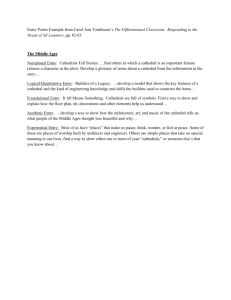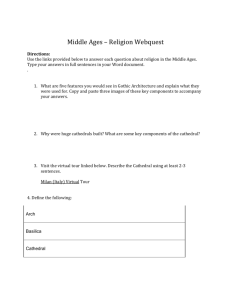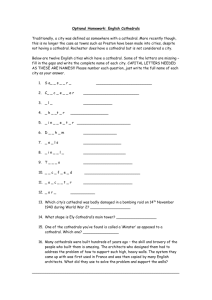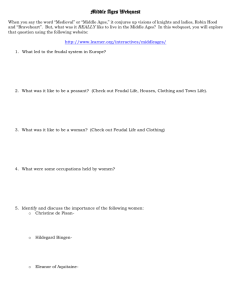Medieval Cathedrals were the most obvious sign of the wealth of the
advertisement
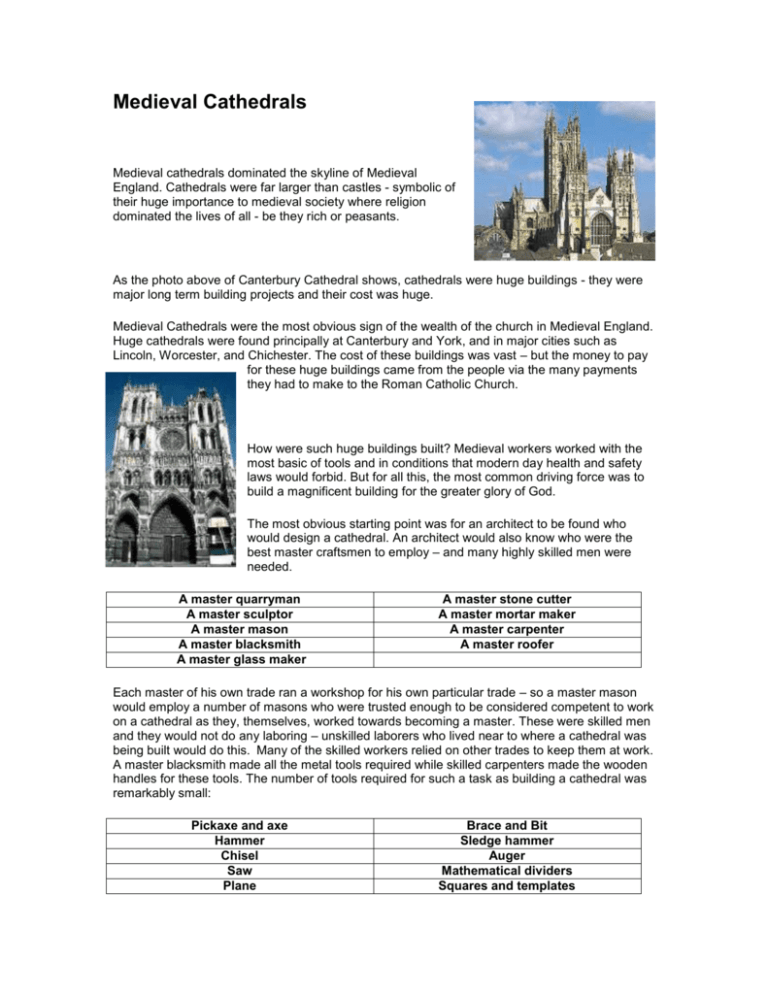
Medieval Cathedrals Medieval cathedrals dominated the skyline of Medieval England. Cathedrals were far larger than castles - symbolic of their huge importance to medieval society where religion dominated the lives of all - be they rich or peasants. As the photo above of Canterbury Cathedral shows, cathedrals were huge buildings - they were major long term building projects and their cost was huge. Medieval Cathedrals were the most obvious sign of the wealth of the church in Medieval England. Huge cathedrals were found principally at Canterbury and York, and in major cities such as Lincoln, Worcester, and Chichester. The cost of these buildings was vast – but the money to pay for these huge buildings came from the people via the many payments they had to make to the Roman Catholic Church. How were such huge buildings built? Medieval workers worked with the most basic of tools and in conditions that modern day health and safety laws would forbid. But for all this, the most common driving force was to build a magnificent building for the greater glory of God. The most obvious starting point was for an architect to be found who would design a cathedral. An architect would also know who were the best master craftsmen to employ – and many highly skilled men were needed. A master quarryman A master sculptor A master mason A master blacksmith A master glass maker A master stone cutter A master mortar maker A master carpenter A master roofer Each master of his own trade ran a workshop for his own particular trade – so a master mason would employ a number of masons who were trusted enough to be considered competent to work on a cathedral as they, themselves, worked towards becoming a master. These were skilled men and they would not do any laboring – unskilled laborers who lived near to where a cathedral was being built would do this. Many of the skilled workers relied on other trades to keep them at work. A master blacksmith made all the metal tools required while skilled carpenters made the wooden handles for these tools. The number of tools required for such a task as building a cathedral was remarkably small: Pickaxe and axe Hammer Chisel Saw Plane Brace and Bit Sledge hammer Auger Mathematical dividers Squares and templates A chapter was the body that governed how much money could be spent on what. It was the chapter that would decide on the final design of the cathedral – and it was the chapter that would instruct the architect on just what they wanted. Once a plan had been decided, the basic work of building a cathedral’s foundations started. At Canterbury Cathedral, recent renovation work showed that the famous cathedral was built over the original cathedral at Canterbury – i.e. the old cathedral became part of the foundations of the new one. It was common for foundations to go as deep as twenty-five feet underground. The building of the foundations was a skill in itself as any errors could lead to weaknesses in the walls above ground – especially when the roof was added. While foundations were being laid, skilled craftsmen worked in quarries and produced blocks of stone that would be used in the building process. It would not be unusual for as many as fifty advanced skilled apprentices to work in a quarry along with 250 laborers. They would be supervised by a master quarryman. A master mason would have provided the master quarryman with templates for the shapes required from the cut quarry stone. Each stone would be marked to show where it would go once the building started. Quick-Write #13: Briefly describe the process of building a Medieval Cathedral, and explain whether or not you (as a serf) would be willing to work on one.
